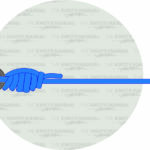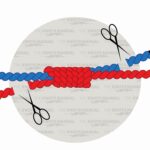The Surgeon’s Knot is a quick, strong knot used to join two lines, especially fishing lines of different diameters. It’s ideal for monofilament and tippet-to-leader connections and is also used in medical sutures and ropework where a permanent, compact join is needed.
Pros and Cons
| ✅ Pros | ❌ Cons |
|---|---|
| Very strong (near 100% line strength) | Hard to untie once loaded |
| Easy to tie, even for beginners | Requires threading the full length of line |
| Works with different diameter lines | Not ideal for long or thick ropes |
| Compact and low profile | Jams under load |
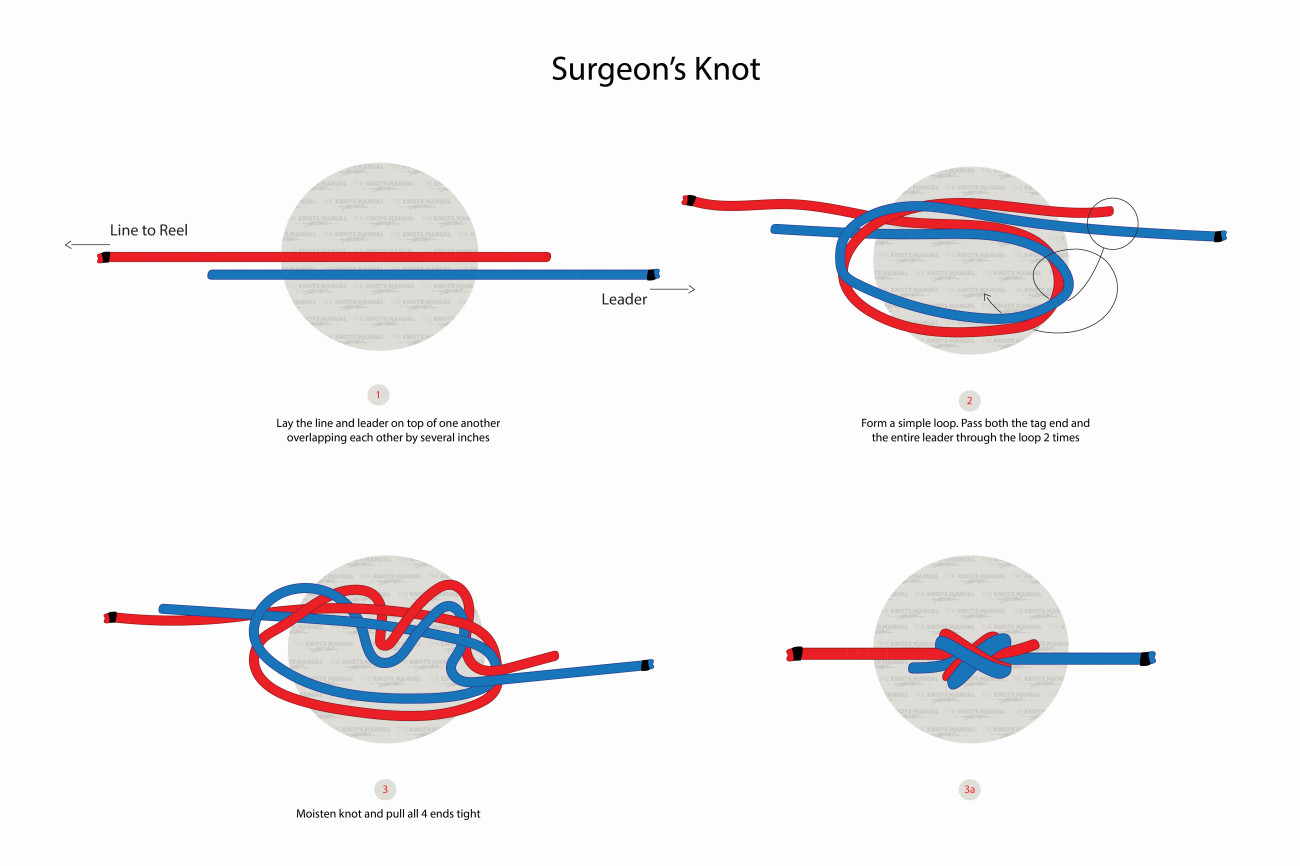
Similar or Alternative Knots
| Knot | Key Use | Notes |
|---|---|---|
| Blood Knot | Fishing, similar line diameters | Slim profile, stronger with similar lines |
| Double Fisherman’s | Climbing, rope joining | Very secure, jams heavily |
| Flemish Bend | General rope joining | Strong and easier to untie than surgeon’s |
| Flat Overhand Bend | Climbing, rappel systems | Simple and less snag-prone |
| Square Knot | Basic joining of ropes/threads | Weaker, only for low-load uses |
Step-By-Step Guide: How to Tie a Surgeon’s Knot

A step-by-step guide on how to tie a Surgeon’s Knot.
Step 1:
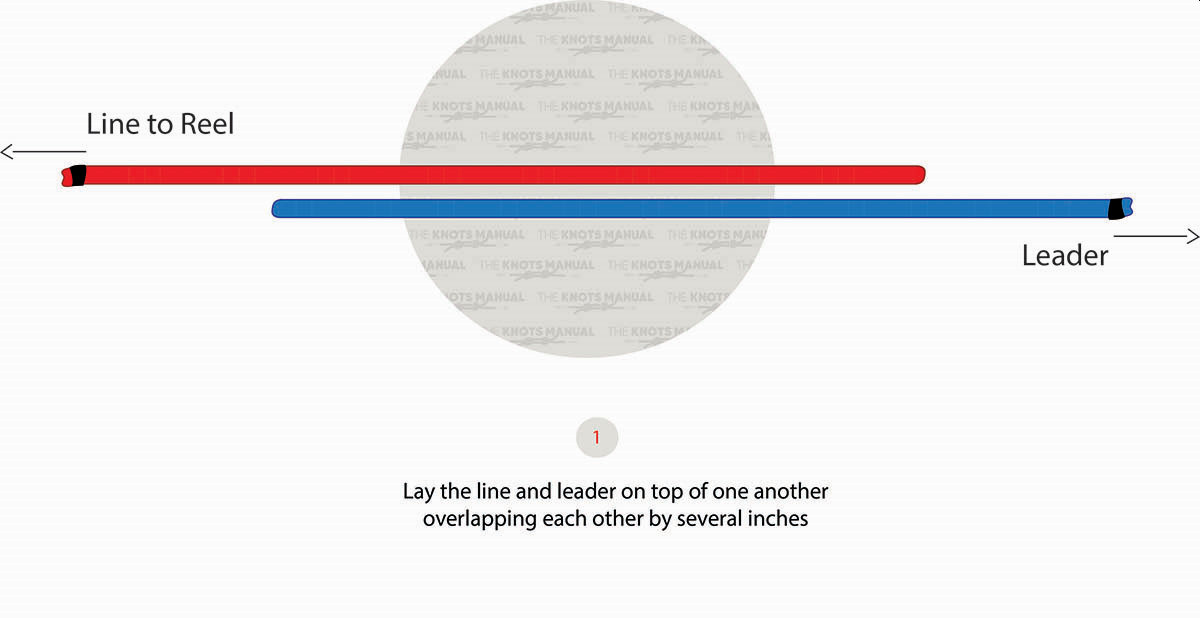
Place both fishing lines (or ropes) next to each other, with the ends overlapping in opposite directions. The shortest line (leader or tippet) should be placed on the right side.
Step 2:
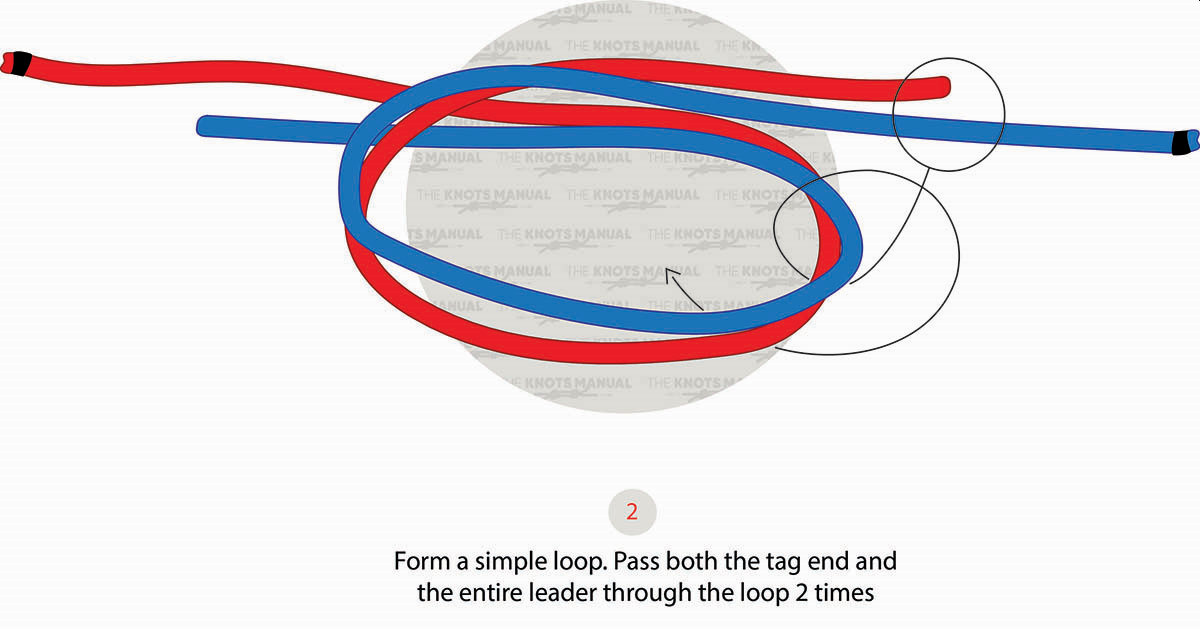
Make a loop with both lines.
Step 3:
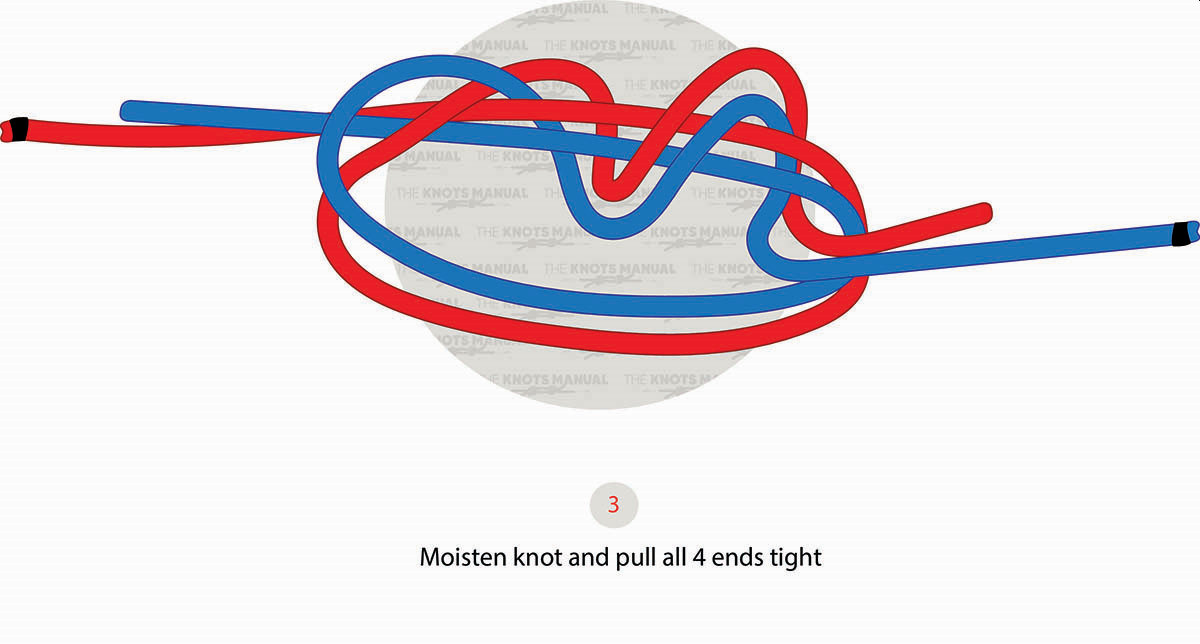
Pass the shortest end through the loop two times.
Step 3a:
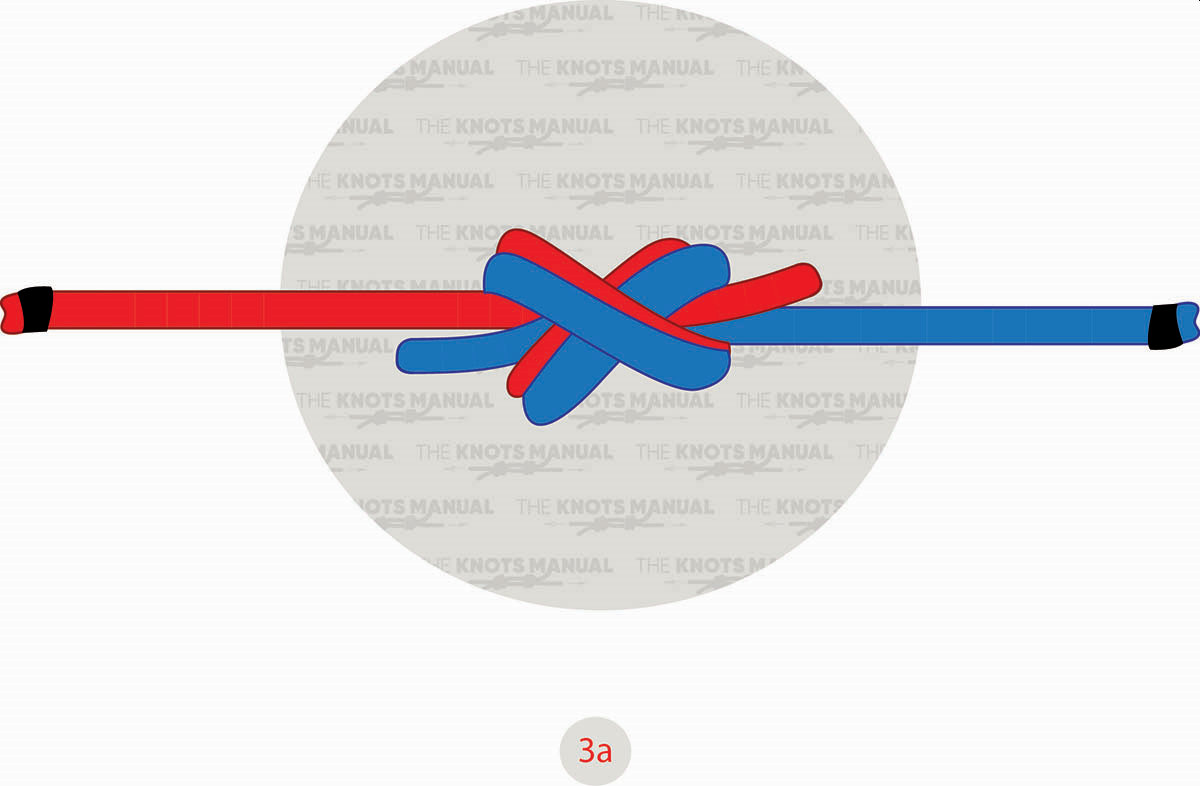
Lubricate and tighten to finish the Surgeon’s Knot.
